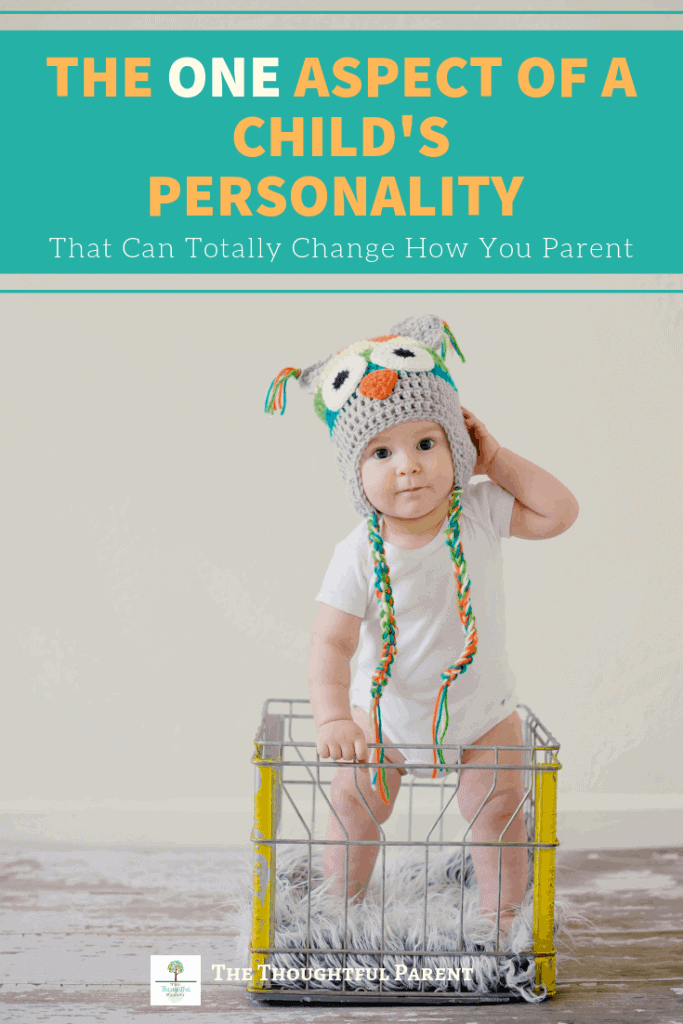{A basic overview of temperament in children and the role it plays in child development}
What is Temperament and Where Does it Come From?
The word ‘temperament’ is heard a lot in any circle of parents, caregivers, or teachers discussing children. Most parents probably have a good sense of their child’s temperament. You often hear parents describe their child as someone who ‘needs some time to warm up’ or is ‘full of energy.’
But what does temperament really mean and where does it come from? Perhaps most importantly, how does temperament influence how parents and children interact? As I started writing this, I realized there was too much information to include in just one post so this is the first of a two-part series on child temperament.
 *This post contains affiliate links. Purchasing through these links helps support this blog at no added cost to you
*This post contains affiliate links. Purchasing through these links helps support this blog at no added cost to you
Although most people have a sense of what temperament is, the research on this topic is wide and varied. Some researchers have different definitions of what temperament is and what aspects of behavior should or should not be included in this construct. Here are some of the main ideas regarding temperament that have developed over the past 40 years or so.
In the 1960s and 70s researchers, Alexander Thomas and Stella Chess conducted a classic study in which they outlined nine dimensions of temperament.
- activity level—energy level of the child
- approach-withdrawl—how child initial responds to a new setting
- mood—child’s general tendency to be happy or unhappy
- rhythmicity—how regular are the child’s physical/biological patterns (e.g., eating, sleeping)
- persistence—child’s ability to stay with a difficult task
- attention span—child’s ability to focus on one task for a length of time
- adaptability—child’s ability to adjust to changes in routine
- threshold—child’s ability to handle external stimuli (e.g., loud noises)
- intensity—child’s tendency to emotionally react strongly or less strongly to events
- distractibility—the degree to which a child is easily distracted from a task or activity
Based on these dimensions, Thomas and Chess characterized children into one of three categories of temperament: “difficult,” “easy,” and “slow to warm up.”
In their study, 65% of children could be classified into one of these categories, so another category of “unable to classify” was created for the remaining 35%. Thomas and Chess found that in their initial study:
40% of the children fell into the “easy” category,
10% into the “difficult” category and
15% into the “slow to warm up” category.
Later, these researchers stated that these classifications should be thought less as discrete categories but more of a continuum along which children fell. So a child is typically not clearly “difficult” or clearly “easy” but somewhere along the continuum from “difficult” to “easy.”

Other, more recent researchers have defined temperament somewhat differently. They focus more on two primary dimensions: 1) emotional or attentional reactivity and 2) self-regulation. So what do these mean?
Reactivity focuses on the child’s responses to stimuli. These stimuli could either be external (e.g., a loud noise) or internal (e.g., feeling angry).
Self-regulation refers to the child’s ability to manage his/her reactivity in various situations. Do these sound familiar? As you can see, the differences between these dimensions and those used by Thomas and Chess are very subtle and there seems to be a lot of overlap.
Related reading: The Art and Science of Raising a Sensitive Boy {without crushing his spirit}
So this gives us a general understanding of what researchers mean when they use the term “temperament.” But where does temperament come from? Is it genetic or something learned as we experience life?
Of course, in science there are rarely easy black-and-white answers to questions like this. Scientists are really just beginning to explore the possible biological components of temperament by using new brain imaging technology (see this video for an interesting look at this new research). Although most researchers agree that there is at least some genetic or biological basis for temperament, the role of the environment and life experience is also important. In reality, the expression of temperament is most likely a combination of both biological and environmental features, or what researchers call “gene-environment” interactions.
This makes sense when you think about it. If you have a tendency to have a more inhibited temperament, this will influence the types of situations you expose yourself to due to the fact that you will not feel comfortable in every situation. This experience with the environment will then further shape your behavior and personality. This distinct interaction between genes and the environment is probably what ultimately makes each of us unique individuals.
Curious about your child’s temperament? Take the temperament quiz and learn more!
 Chime in!
Chime in!
What are some of your child’s unique temperamental characteristics? Reply in the comments and let’s chat.
Additional resources:
Podcast on the temperament of babies





Amber
I love this research-based look at temperament. I use this term a lot and often wonder if I'm including all that it really is, scientifically, or if my usage has morphed into my own interpretation. I think I typically use it talking about activity level and approach-withdrawal. I'll have to be more aware of its current meaning now when I use it 🙂